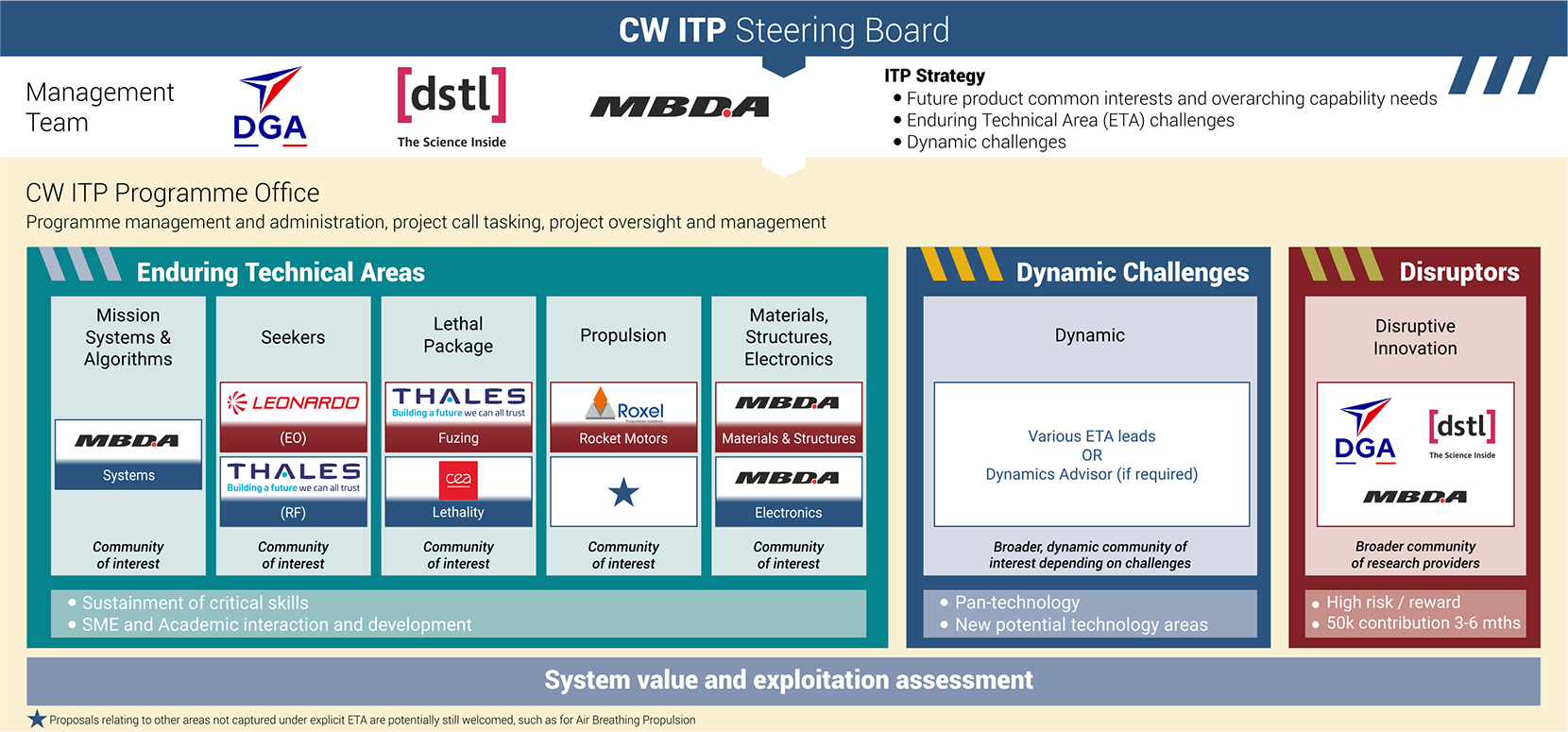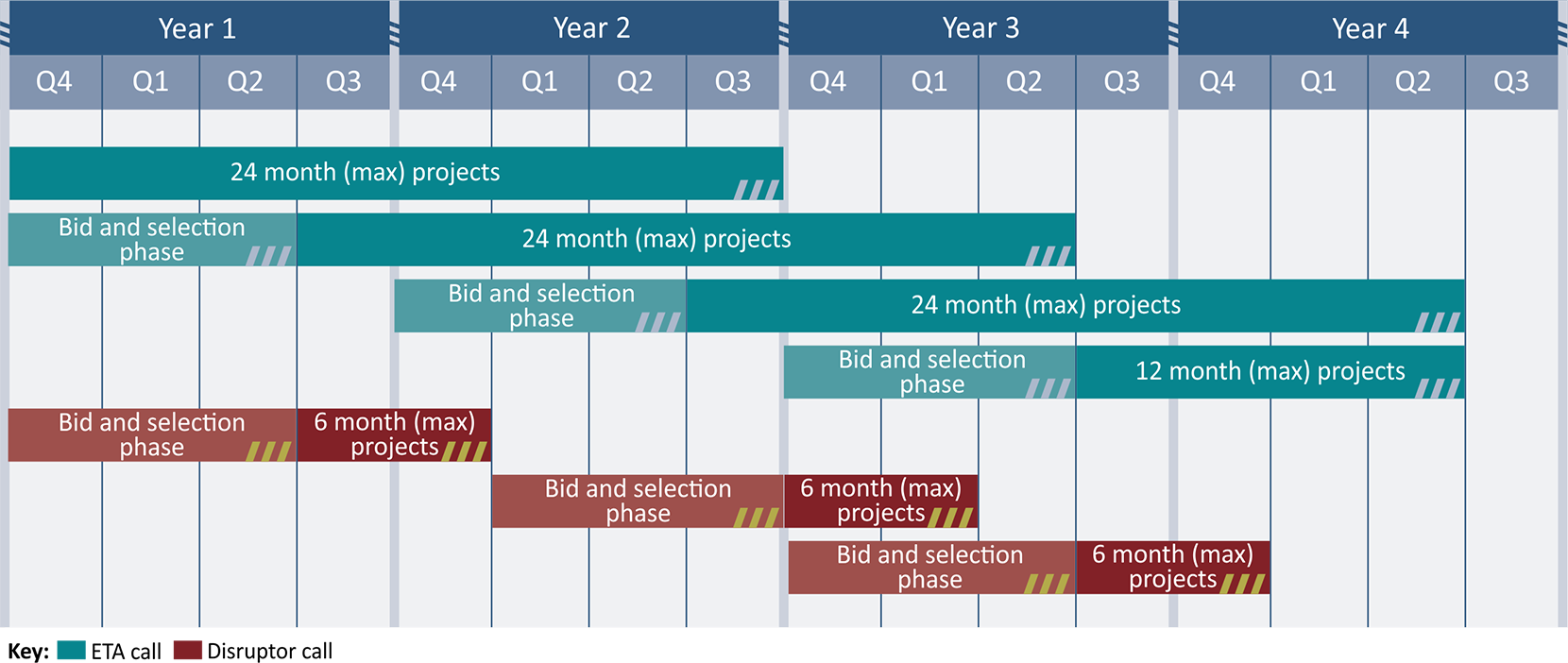The Complex Weapons Innovation Technology Partnership (CW ITP) provides a focus for Anglo-French collaboration and co-ordination of research into complex weapons technologies across MoD (Ministry of Defence), Industries, Small–to-Medium Enterprises (SMEs), and Academia.
The fundamental objective is to foster collaboration between leading British and French industrial concerns and academic establishments in the delivery of low Technology Readiness Level (TRL) technologies relevant to future complex weapons, specifically aimed at TRL levels 1 to 4, and support the assessment and exploitation into future products of these technologies.

Identified by the Dstl and DGA as critical areas of Complex Weapons technical expertise for which sustainment of skills and national capability, and identification of future technologies is key. Research calls are be run annually with enduring challenges. These fall into 5 main groups.
Dynamic in-year, priority challenges are likely to be addressed through one or more ETA Leads where the challenges fall within or cut across the existing CW ITP technical scope. ETA and Dynamic tasks follow a more-involved proposal process from October to July. These are additional research priorities, which may not endure year-on-year and may be transversal (cover multiple ETAs) or, potentially, outside of normal ITP technical scope. These are run as part of the same process as the enduring research.
Disruptor proposals follow a simpler process, governed at the CW ITP Management Team level, so that they move rapidly from selection to contract to delivery - a great opportunity for innovators to test their emerging ideas. The opportunity for emerging ideas and innovations to be tested through short, low cost activity, prior to any potential larger activity.
The CW ITP is based on a two-year rolling schedule with the call for Enduring and Dynamic research proposals launched in October, focussed on the Conference every other year. Projects of between 1 and 2 years duration will support more varied research goals and substance, complemented by the shorter Disruptor tasks launched twice per year. The schedule is designed such that projects complete in good time to present research highlights at the conference.
